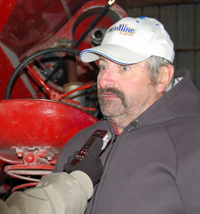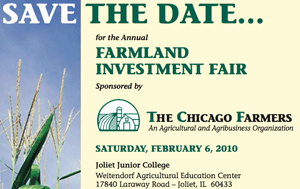 I guess it would be more correct to call these BASF Headline POST-harvest reports, even though there is still about eight percent of the corn left in the fields at this point. Iowa farmers are pretty much done with this season, including Henry Miller of West Union, which is in the northeast part of the state. We caught up with him on Monday as Mother Nature was sending in a blast of frigid temperatures to welcome his 7th grandchild who was born early that morning.
I guess it would be more correct to call these BASF Headline POST-harvest reports, even though there is still about eight percent of the corn left in the fields at this point. Iowa farmers are pretty much done with this season, including Henry Miller of West Union, which is in the northeast part of the state. We caught up with him on Monday as Mother Nature was sending in a blast of frigid temperatures to welcome his 7th grandchild who was born early that morning.
Henry finished his corn harvest just about two weeks ago and he is very glad to see the 2009 season with its weather extremes coming to a close. “It was very far from normal,” Henry told me. His biggest challenge this year was summer hail storms. “In June we had corn knee high, we had hail that stripped it and beat the beans practically in the ground. Then in July, we got hit (with hail) on the other farm about tasseling time.”
Because of all the bruising to the crop, Henry’s agronomist recommended using Headline fungicide, which was the first time he ever used it. “The yields were better than what I expected, it stood good, we had no problems with standability – I guess Headline helped us out there,” Henry said.
Listen to my interview with Henry here:

 How will the wet fall impact this year’s prices? How can I use social media to promote my farm? What are our competitors in Brazil doing right now? These are all questions you’ll find answered on the
How will the wet fall impact this year’s prices? How can I use social media to promote my farm? What are our competitors in Brazil doing right now? These are all questions you’ll find answered on the 
 With winter fast approaching it’s time to make your farm meeting plans. Make one of them the
With winter fast approaching it’s time to make your farm meeting plans. Make one of them the  To learn more about
To learn more about  If you haven’t voted for your favorite video in the
If you haven’t voted for your favorite video in the  It’s time once again for the Agriculture Council of America’s Ag Day essay contest. The contest is open to seventh- to 12th-grade students who are asked to submit an original, 450-word essay about the importance of agriculture. This year’s theme is “American Agriculture: Abundant, Affordable, Amazing,” and the deadline is Feb. 12. Teachers and parents are asked to encourage their students to participate.
It’s time once again for the Agriculture Council of America’s Ag Day essay contest. The contest is open to seventh- to 12th-grade students who are asked to submit an original, 450-word essay about the importance of agriculture. This year’s theme is “American Agriculture: Abundant, Affordable, Amazing,” and the deadline is Feb. 12. Teachers and parents are asked to encourage their students to participate. It’s Holiday Greeting time and the wishes are rolling in. Here’s the Association of Equipment Manufacturers saying Happy Holidays. I’m looking forward to spending a lot of time with them in January at their AG CONNECT Expo of which we’re a
It’s Holiday Greeting time and the wishes are rolling in. Here’s the Association of Equipment Manufacturers saying Happy Holidays. I’m looking forward to spending a lot of time with them in January at their AG CONNECT Expo of which we’re a 